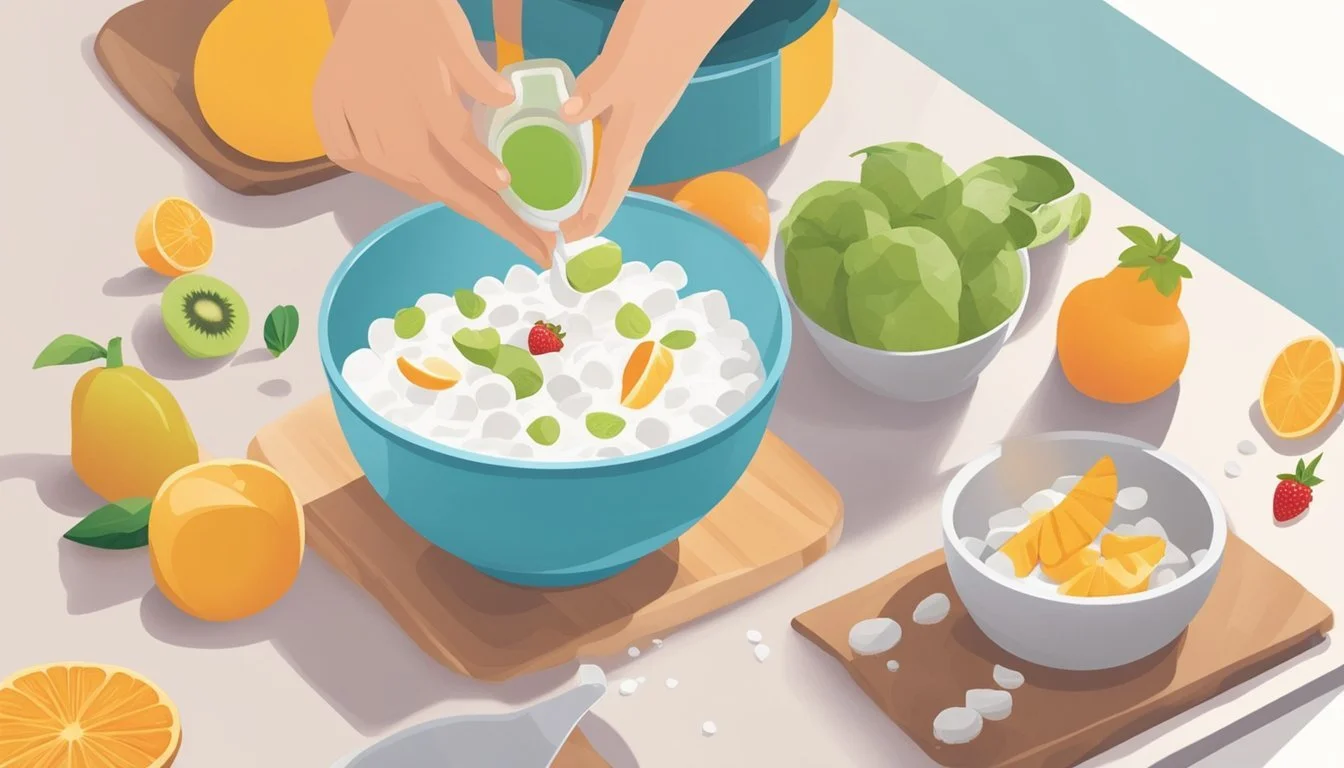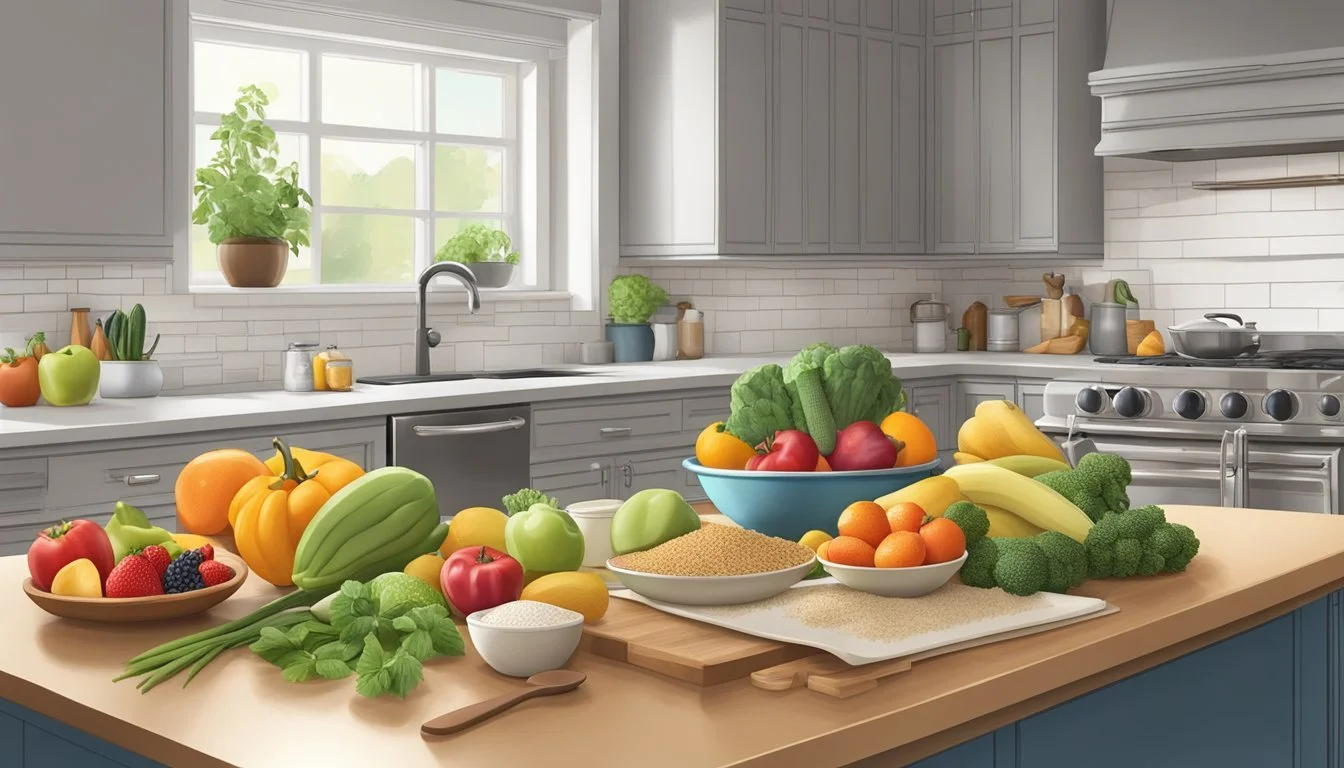How to Cook When You're Trying to Cut Down on Sugar
Mastering Low-Sugar Meals
Cutting down on sugar can be a valuable step towards healthier cooking and eating habits. When considering sugar intake, it's important to distinguish between natural sugars, which are found inherently in foods like fruits and dairy, and added sugars that are incorporated during processing or cooking. Added sugars contribute additional calories without providing any necessary nutrients, and reducing them is often a primary goal for those looking to improve their diet.
In cooking, many recipes can be adapted to lower their sugar content without sacrificing flavor. This involves not only decreasing the amount of sugar used but also finding alternative ways to enhance taste. Techniques such as using spices, vanilla, or citrus extracts can deliver the desired sweetness and depth of flavor, allowing one to enjoy their favorite dishes in a more health-conscious way. When baking, for example, reducing the sugar called for in the recipe by one-third to one-half is often possible without a noticeable difference in taste.
Understanding how to approach cooking with less sugar is essential for maintaining a balanced diet. It empowers individuals to make conscious choices about their sugar intake, thereby potentially reducing the risk of associated health issues. Whether it’s modifying recipes, substituting ingredients, or simply being mindful of the sources of sugar in one's diet, these strategies can form the foundation of a nutritionally sound approach to cooking and eating.
Understanding Sugar and Its Effects
Sugar is a type of carbohydrate that the body uses for energy. When consumed, it breaks down into glucose, which enters the bloodstream. From there, insulin, a hormone produced by the pancreas, helps glucose move from the blood into the cells. Blood glucose levels, thus, are a pivotal factor in the body's energy regulation.
However, excessive sugar intake can lead to various health issues. When the body takes in more sugar than it can effectively process, the excess is stored as fat. This can contribute to weight gain and an increased risk of heart disease. Consistently high levels of sugar consumption may lead to a condition known as insulin resistance, which can further develop into type 2 diabetes—a chronic disease where the body struggles to manage blood sugar levels properly.
Prediabetes is a state where blood glucose levels are high but not yet high enough to be classified as diabetes. It serves as a warning sign. Moreover, research indicates that a diet high in added sugars is linked to an increased risk of certain types of cancer.
To mitigate these risks, it’s important to understand how to identify added sugars in food and to manage their intake. Here is a brief guide:
Natural sugars vs Added sugars: Natural sugars are found in fruits and milk, whereas added sugars are incorporated during processing and cooking.
Reading labels: Looking for terms like corn syrup, molasses, and anything ending in '-ose' can help individuals identify added sugars on nutrition labels.
Overall, while sugar plays a role in a balanced diet, moderation is key to maintaining good health and preventing disease.
Identifying Sugars on Food Labels
When cooking with an aim to cut down on sugar, it is crucial to understand how to read food labels effectively. This allows individuals to identify both natural and added sugars that might contribute to their daily intake.
Deciphering the Ingredients List
The ingredients list on food labels is the first place to look for added sugars. Sugar can go by many names, and it is important to recognize these variations. Common names for added sugar include:
Sucrose
Fructose
Corn syrup
High-fructose corn syrup
Maltose
Dextrose
Added sugars are listed in order of quantity, so the higher they are on the list, the more there is in the product. It's also useful to keep an eye out for ingredients ending in '-ose,' as these typically indicate a form of sugar.
Spotting Hidden Sugars
Hidden sugars can be more challenging to spot because they often come disguised as seemingly healthy options. Two common forms of hidden sugars are:
Fruit juice concentrates: These are often added to products to sweeten them naturally, but they are high in sugar.
Natural sweeteners: While they are marketed as healthier options, substances like honey, agave, and maple syrup still contribute to overall sugar intake.
Reading beyond the nutrition facts to the ingredients list is essential. Look out for words like "syrup" or any variations of "sweetener" as indicators of added sugars.
Healthy Substitutes for Sugar
When cooking and baking, one can reduce sugar intake by using natural sweeteners and spices that add flavor without empty calories.
Opting for Natural Sweeteners
Natural sweeteners can act as healthier alternatives to table sugar by providing additional nutrients or having a lower impact on blood sugar levels. Honey, for instance, is a popular natural sweetener that can be used in lower quantities due to its higher sweetness. One can use about one-third less honey than sugar in recipes because of its richer flavor. Agave syrup is another option; while it has similar calorie content to sugar, it is sweeter, so less is needed. Stevia, a no-calorie sweetener made from the leaves of the Stevia plant, is significantly sweeter than sugar. Due to its potency, it should be used sparingly—typically a few drops or a small part of a teaspoon will suffice.
Fruit can also be a healthy sugar substitute. Pureed bananas, applesauce, or dates offer natural sweetness and extra fiber to baked goods.
Using Spices to Add Flavor
Spices such as cinnamon, vanilla, and nutmeg can enhance the natural sweetness of dishes without the need for added sugars. These spices contribute a depth of flavor to foods and can reduce the need for sugar in recipes.
Cinnamon: Complements sweet and savory dishes alike and can lessen the need for sugar in cereals, oatmeal, or baked products.
Vanilla: Adds a rich and aromatic sweetness to desserts and beverages.
Nutmeg: Has a warm, nutty sweetness perfect for sprinkling on fruit or adding to baked goods.
By relying on these spices, one can not only cut down on sugar but also increase the complexity and richness of the dish's flavor profile.
Modifying Your Baking Practices
When attempting to reduce sugar in baking, one can explore sugar alternatives and adjust existing recipes to achieve a healthier product without sacrificing taste. Careful consideration of the role sugar plays in each recipe ensures successful modifications.
Choosing Sugar Alternatives
For those seeking to bake sugar-free cakes, cookies, and other desserts, selecting the right sugar alternatives is critical. A variety of non-sugar sweeteners can be utilized:
Stevia: A plant-based sweetener, which is much sweeter than sugar and has no calories. Useful in cakes and cookies, but should be used sparingly.
Erythritol: A sugar alcohol that has almost no calories and doesn't spike blood sugar levels. Suitable for a wide range of baked goods.
Monk fruit sweetener: Extracted from monk fruit, it is a calorie-free sweetener that is several times sweeter than sugar.
The key is to experiment with different sugar alternatives and their appropriate ratios as they may vary in sweetness and volume compared to sugar.
Reducing Sugar in Recipes
One can reduce the traditional amount of sugar in recipes without a major difference in texture for many baked goods:
Cookies: Sugar can often be reduced by up to one-third. To maintain moisture, consider adding an extra egg yolk in place of an egg white.
Cakes: Replace part of the sugar with unsweetened applesauce or mashed bananas to add natural sweetness and moistness.
Pancakes: Minimize the sugar, and enhance flavor with vanilla extract, cinnamon, or nutmeg.
It is recommended to decrease sugar gradually, as drastic reductions can alter the structure, browning, and taste of the baked items. Reducing the sugar incrementally allows adjustment to the less sweet flavor and helps identify the perfect balance for one's palate.
Sugar Conscious Diet Planning
Embarking on a sugar-conscious diet requires meticulous planning and understanding of how to incorporate nutrient-rich foods across all meals. Careful choice of ingredients and awareness of hidden sugars are key to maintaining a balanced diet.
Starting with a Healthy Breakfast
Breakfast sets the tone for the day. Opting for oatmeal provides a filling base that's high in fiber, and it can be sweetened naturally with fruits like berries or slices of banana. Incorporating nuts and seeds adds a crunch, alongside essential healthy fats and protein. When choosing cereal, one should select brands with low added sugar content and high fiber. Adding dairy alternatives can also reduce sugar intake, with options such as unsweetened almond or soy milk.
Oatmeal: Top with fruits, nuts, and a dash of cinnamon for sweetness.
High-fiber cereal: Read labels to find options with the least sugar.
Nuts and Seeds: A small handful can add satisfying texture and nutrients.
Preparing Balanced Meals and Snacks
A nutritious plate for lunch and dinner should include a variety of vegetables, lean protein such as meat or legumes, and a portion of whole grains. For snacks, cheese and cut vegetables, or a small portion of nuts, are excellent choices for keeping sugar cravings at bay while providing essential vitamins and minerals.
Lunch/Dinner Plate:
Half plate vegetables: Raw, grilled, or steamed to preserve nutrients.
One quarter plate protein: Grilled chicken, fish, or plant-based proteins.
One quarter plate whole grains: Brown rice, quinoa, or whole-grain bread.
Snacks:
Vegetables and hummus: A fibrous choice that helps manage sugar levels.
Cheese and nuts: Portion-controlled for a satisfying, protein-rich snack.
Making Smart Drink Choices
Beverages can be a significant source of hidden sugar. One should hydrate primarily with water, opting for naturally flavored or sparkling water instead of soda or juice. When drinking tea or coffee, avoiding added sugars and syrups is advisable. For those who consume alcohol, selecting dry wines and spirits with non-sweet mixers are better options than sugary cocktails or beer.
Water: Infuse with cucumber, lemon, or berries for flavor without sugar.
Tea/Coffee: Enjoy plain or with a splash of milk, avoiding sugar and sweetened creamers.
Alcohol: Choose spirits mixed with soda water or dry wines to minimize sugar consumption.
By focusing on whole foods and natural flavors, one can plan a diet that reduces sugar intake without sacrificing satisfaction or variety.
Managing Sugar Cravings and Cutting Down Over Time
Reducing sugar can lead to better weight management and improved energy levels. A gradual reduction helps the body adjust without triggering severe cravings. Finding satisfying alternatives to sugary foods and understanding the nature of cravings are essential to success.
Finding Satisfying Substitutes
To mitigate sugar cravings, individuals should opt for foods that are rich in nutrients and fiber, providing longer-lasting energy without the sugar spike. Snacks like nuts, seeds, and fresh fruit can satisfy the sweet tooth while offering health benefits. Dark chocolate, with a high cocoa content, is a healthier choice compared to milk chocolate as it contains less sugar and is rich in antioxidants.
Berries - A sweet and fiber-rich option.
Dried Fruit - Such as raisins, in moderation due to higher sugar concentration.
Nuts and Seeds - Provide a hearty crunch and healthy fats.
Understanding and Controlling Cravings
Recognizing what triggers sugar cravings can empower individuals to control them. Stress often leads to increased cravings; incorporating stress-reduction techniques like exercise can help keep cravings in check. Proper sleep is also essential, as lack of it may lead to increased ghrelin levels, a hormone that can stimulate appetite. Chewing gum can distract from cravings and provide a temporary fix without the sugar intake. It's crucial to consume less than 25 grams of added sugar daily for women and 36 grams for men to maintain a healthier lifestyle.
Additional Tips for a Low-Sugar Lifestyle
When embarking on a low-sugar lifestyle, it's crucial to focus on incorporating more whole foods and choosing beverages that aid in hydration without added sugars. These changes can contribute to disease prevention and help maintain a balanced diet.
Incorporating More Whole Foods
Whole grains serve as a fundamental component of a low-sugar diet. They are packed with nutrients and have a lower impact on blood sugar levels than refined grains. Nutritionists often recommend foods like brown rice, quinoa, and oats as healthy alternatives. Incorporating whole grains into meals can add natural flavor and texture, reducing the need for added sugars.
Salad can also be an ideal choice for those cutting down on sugar. One can make salads more flavorful by using vinegar, lemon juice, and herbs like ginger and allspice. Homemade pasta sauce is another area where one can control the amount of sugar. Making pasta sauce from scratch allows the substitution of sugar with natural sweetness from ingredients like ripe tomatoes and carrots.
Staying Hydrated with the Right Beverages
Beverages can be a hidden source of excessive sugar, and it's essential to make wise choices. Sparkling water is an excellent alternative to sugary sodas and can be infused with natural ingredients such as lemon or lime for added flavor. Iced tea sweetened with extracts like vanilla or a cinnamon stick can provide a rich taste without the need for sugar.
Nutritionists and organizations like the American Heart Association advise against the regular consumption of high-sugar beverages. Instead, opting for sugar-free drinks or those naturally low in sugar can significantly reduce overall sugar intake. Therefore, reading the food label when purchasing any beverage is crucial to ensure it aligns with a low-sugar lifestyle.





